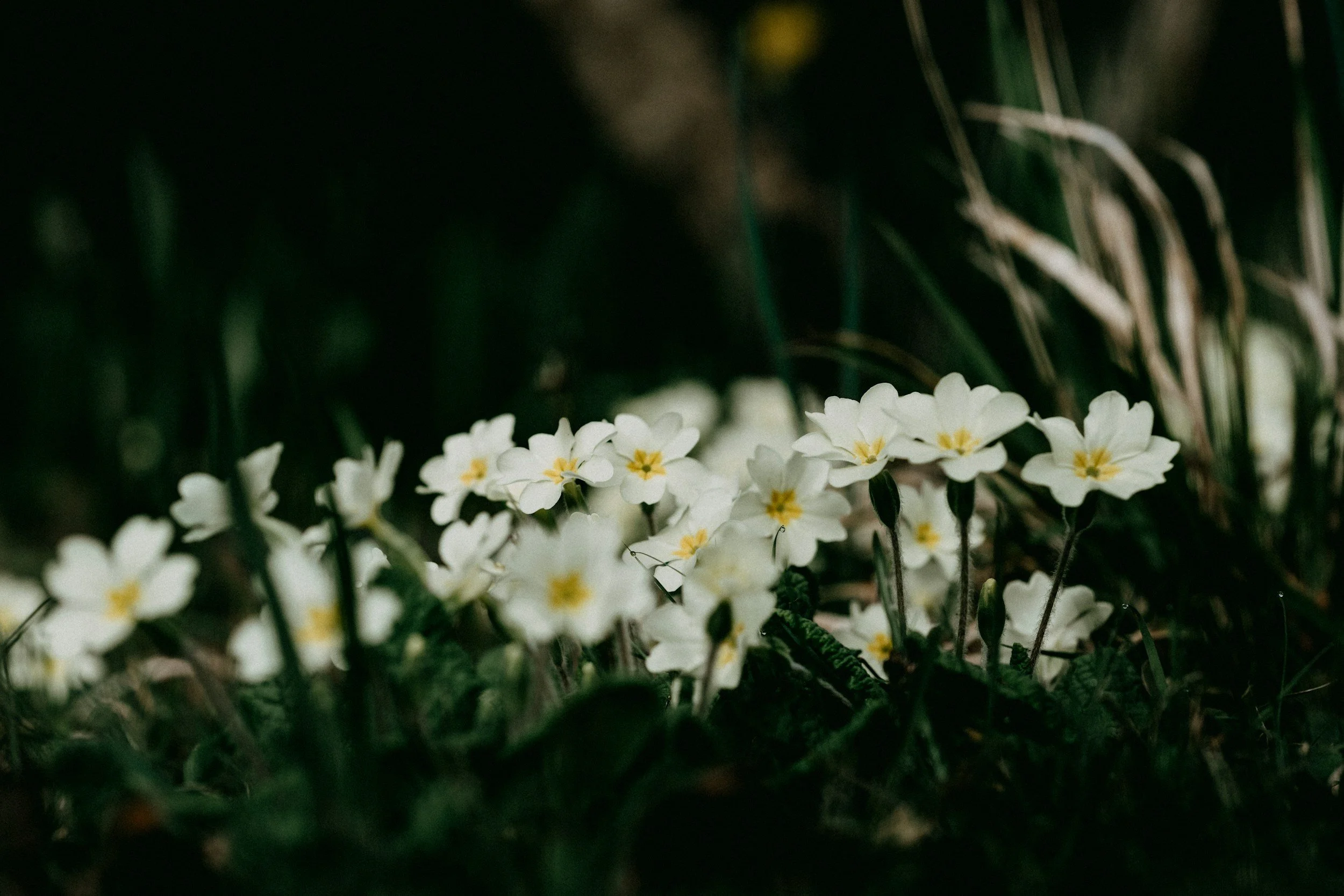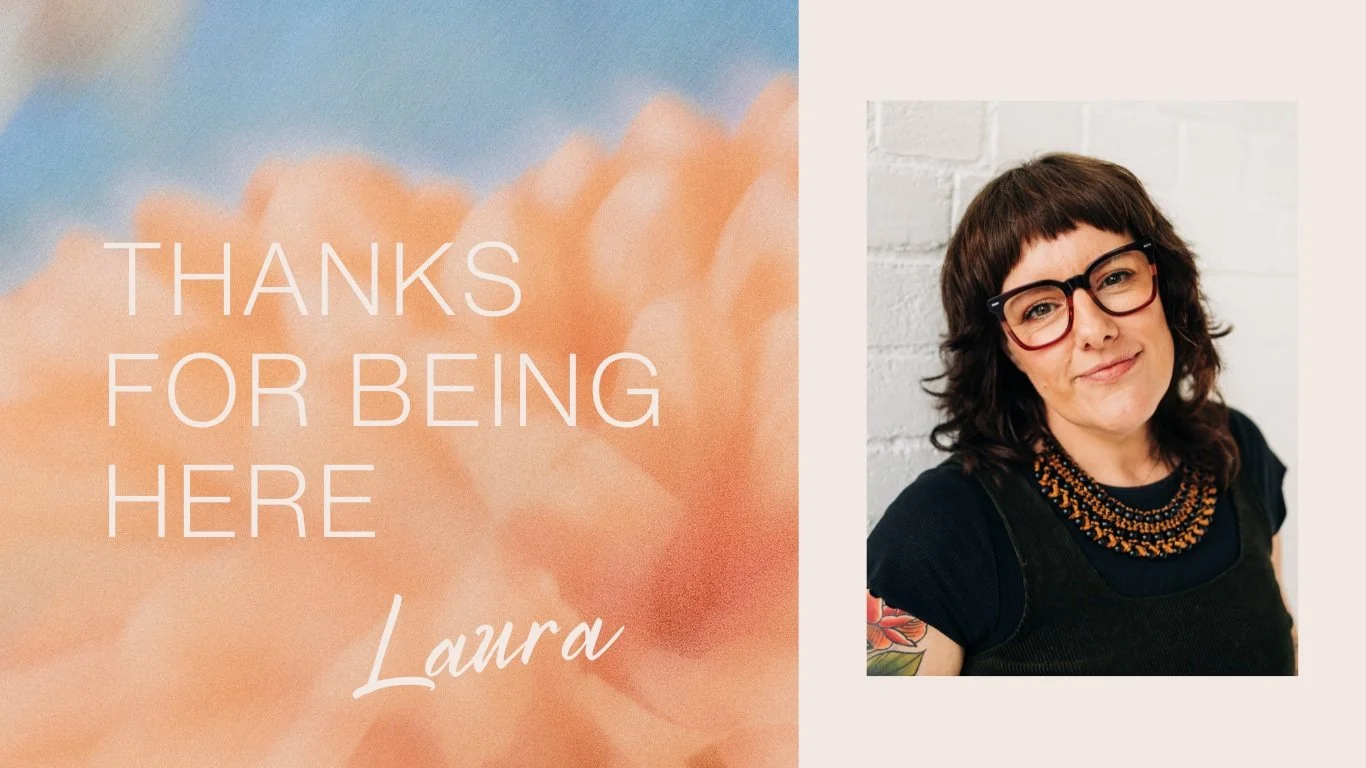Exploring and understanding mindfulness and meditation
Mindfulness; the awareness that arises from paying attention, on purpose, in the present moment, without judgement
Mindfulness and meditation have ancient roots, originating thousands of years ago within diverse spiritual traditions and gradually evolving into many forms across cultures. Today, these practices are celebrated for their impact on mental and physical wellbeing (something the people from the cultures where they developed won’t be surprised to hear, I’m sure!). Meditation can help to reduce stress, enhance concentration and promote overall balance. The continued presence in both spiritual and secular settings reflects meditation’s adaptability and relevance in modern life. There are a lot of misconceptions, though, about what meditation should look like
If you’re new here I’m Laura, a counsellor, nature therapist, somatic therapist and a licensed meditation teacher. I’m also someone with ADHD so I know from first hand experience the challenges many of us can face when it comes to meditation and mindfulness.
Luckily there are lots of different ways of meditating that makes it accessible for almost anyone, whatever their needs. That said, there are some instances where meditation might not be suitable. People with severe psychiatric disorders, such as severe depression, anxiety, psychosis, schizophrenia, PTSD, or bipolar disorder, should consult healthcare professionals before starting a meditation practice. Similarly, if you’re experiencing acute grief, chronic pain, or specific physical health conditions you might need to modify your mindfulness or meditation practice. Start slowly. Having tools and resources for grounding, and connecting with trauma-informed practices can help you to have a safe and supportive experience.
What is is meditation and mindfulness?
What is mindful meditation? If you’re looking to define mindfulness meditation, this definition by Jon Kabat-Zinn is helpful: “the awareness that arises from paying attention, on purpose, in the present moment and non-judgmentally”.
What does that mean in real terms though? Well, it’s easy enough to be present but being present and really noticing what’s going on without judging it takes a little bit more focus! Meditation is fundamentally about cultivating awareness of your present moment experience. It involves focusing the mind on a particular object, thought, or activity to help us to feel connected to the here and now. Being present with what is helps us to step outside of the stories we tell ourselves about the past and the future.
When other things creep in, for example thoughts, we notice them, we try not to attach to them and we bring our attention back to our point of focus. When we do this over and over again we are practicing meditation.
You might be wondering ‘is there a difference between mindfulness and meditation’. Mindfulness is a particular type of meditation that is rooted in practice that’s rooted in Vipassanā, an ancient Buddhist practice. Mindfulness, as it’s most commonly understood in the West, has its roots in Vipassanā, an ancient Buddhist meditation practice. The word Vipassanā means “insight” or “clear seeing,” and it focuses on being fully aware of the present moment; observing thoughts, emotions, and sensations without judgment.
While mindfulness shares similarities with other ancient traditions like Hinduism and Taoism, its most direct influence comes from Buddhist teachings. In modern times, people like Jon Kabat-Zinn helped bring these ideas into Western culture through programs such as Mindfulness-Based Stress Reduction (MBSR), which present mindfulness in a secular and accessible way.
Criticism of mindfulness and meditation in the West
The secular adaptation of mindfulness and meditation isn’t without it’s criticism or problems. When sacred or cultural practices are borrowed without understanding, respect, or acknowledgment of their origins, especially when those practices come from marginalised or colonised cultures, this can be viewed as cultural appropriation. In the case of mindfulness, appropriation happens when it’s commercialised, commodified (e.g. “mindfulness apps” or corporate productivity tools), or presented as a purely scientific technique without honouring its Buddhist roots.
Meditation, in general, also has an accessibility issue. Typical images that show people meditating show someone serenely sitting cross legged on a yoga mat but meditation doesn’t have to be a one-size-fits-all approach. There are various types of meditation and some of my favourite approaches include somatic practices, nature based meditation practices and even intentional movement like yoga and dancing. Yep, that’s right, if you move your body in an intentional way, holding your attention in the present moment, you’re meditating! This versatility means we can find a practice that suits our needs and the way our energy ebbs and flows from day to day.
Mindfulness and Beginners Mind
Beginner’s mind is a concept from Zen Buddhism that means approaching each moment with openness, curiosity and without preconceived notions; as if experiencing something for the first time. I like to imagine I’m an alien who’s just landed on Earth and I’m seeing everything for the first time. Let’s try a short mindfulness exercise now, to explore this.
Find a small object. A coin or a button is perfect.
Start by holding it in your hand. Turn it over a few times.
Feel the weight of it in your palm. Does it feel heavy or light?
Notice whether it’s warm or cool to the touch.
Try not to attach to these observations. We’re simply viewing our object non-judgementally.
Notice its texture. Is it smooth or rough? Is it one texture all over?
Notice the colour. Is it a uniform colour all over? Or does it vary?
What effect does light have on the object?
Again, if you find yourself making judgements about the object, simply let them pass by without attaching to them.
Does the feel of the object change if you place it on different parts of your body?
What happens if you press it against your face?
Or rest it on your wrist?
Does the object have a smell?
What you’ve been doing during this exercise is mindfulness. You have been “paying attention, on purpose, in the present moment and non-judgmentally”. How did it feel?
In mindfulness practice, cultivating beginner’s mind helps us stay present and curious, even in familiar situations. It reminds us that every moment is new and full of possibility when we let go of judgment and expectation.
A mindfulness or meditation practice
The word ‘practice’ is key when it comes to meditation. This is a process of starting again, over and over. We begin our practice, our mind wanders, we notice that it has wandered without judgement and we bring ourselves back to the practice.
We practice bringing our attention to the breath and when that attention wanders we bring it back again. We practice bringing the attention to the object we’re focussed on and when that attention wanders we bring it back again. We practice being present in our environment, and when our attention wanders we bring it back again. We practice being non-judgemental about our thoughts, feelings and sensations and when we slip back into old patterns, we begin again.
Meditation is best practiced regularly. Some days it feels easy and some days it feels impossible. Most days it’s somewhere in between. That’s true whether you’re an experienced meditator or a complete beginner. We practice for practicing’s sake though and it’s the practice itself that leads to benefits outside of the practice itself.
What meditation isn’t
A quick fix: meditation is not a quick fix for life's challenges. While it can offer immediate benefits like relaxation and stress reduction, the deeper, long-term benefits require consistent practice and patience. It’s a gradual journey rather than an instant solution. As I mentioned above, I have ADHD so being consistent with anything can be a challenge. I don’t always have a formal meditation each day but I do always take some time to be present and engaged with the here and now. Having a consistent approach is all about being adaptive towards your needs.
An escape from your struggles: meditation is not about escaping reality or avoiding your problems - that’s spiritual bypass - instead, it’s about facing them with a calm and clear mind. Being with what is. Accepting all of our feelings, emotions and thoughts, and allowing them to be there. Meditation helps us to develop resilience and have a deeper understanding our experience.
Meditation tips for neurodiverse brains
Those of us that are neurodivergent sometimes face unique challenges when it comes to traditional meditation practices. Here are some tailored tips to make meditation more accessible and effective:
Shorter sessions
For those with shorter attention spans (like me!), starting with brief meditation sessions can be more manageable. Even a few minutes of focused breathing or mindfulness can have a positive impact. Gradually increasing the duration as comfort and focus improve can lead to longer, more effective sessions. I also find it really helpful to listen to guided meditation sessions from teachers who offer sessions where there’s not too much silence.
Incorporate movement
Neurodivergent people often benefit from more movement based meditation practices. This could include activities like walking meditation, yoga, or Tai Chi, which combine physical activity with mindfulness. These active forms of meditation can help channel excess energy and improve focus.
Use guided meditations
Guided meditations can be particularly helpful for neurodivergent people. These recordings provide step-by-step instructions and can help keep the mind focused. There are lots of resources available, including some free meditations on my blog. If you find a session is still too under-stimulating try increasing the playback speed!
Sensory-friendly environments
Creating a sensory-friendly environment can make meditation more comfortable. This might involve using noise-canceling headphones, dimming the lights, or using calming scents like lavender. You might also try meditating under a weighted blanket. Finding a space that minimises sensory distractions can enhance the meditation experience.
Get your mindfulness and meditation on
Meditation is a powerful tool for enhancing ourl well-being, but it is often misunderstood. By recognising what meditation is and isn’t and making accommodations for ourselves, we can approach our practice with realistic expectations and an open mind. For neurodivergent people adapting meditation practices to suit our needs can make it more accessible and beneficial.
If you’d like support to explore a meditation practice I offer 121 meditation and mindfulness coaching sessions. You can get in touch here.



